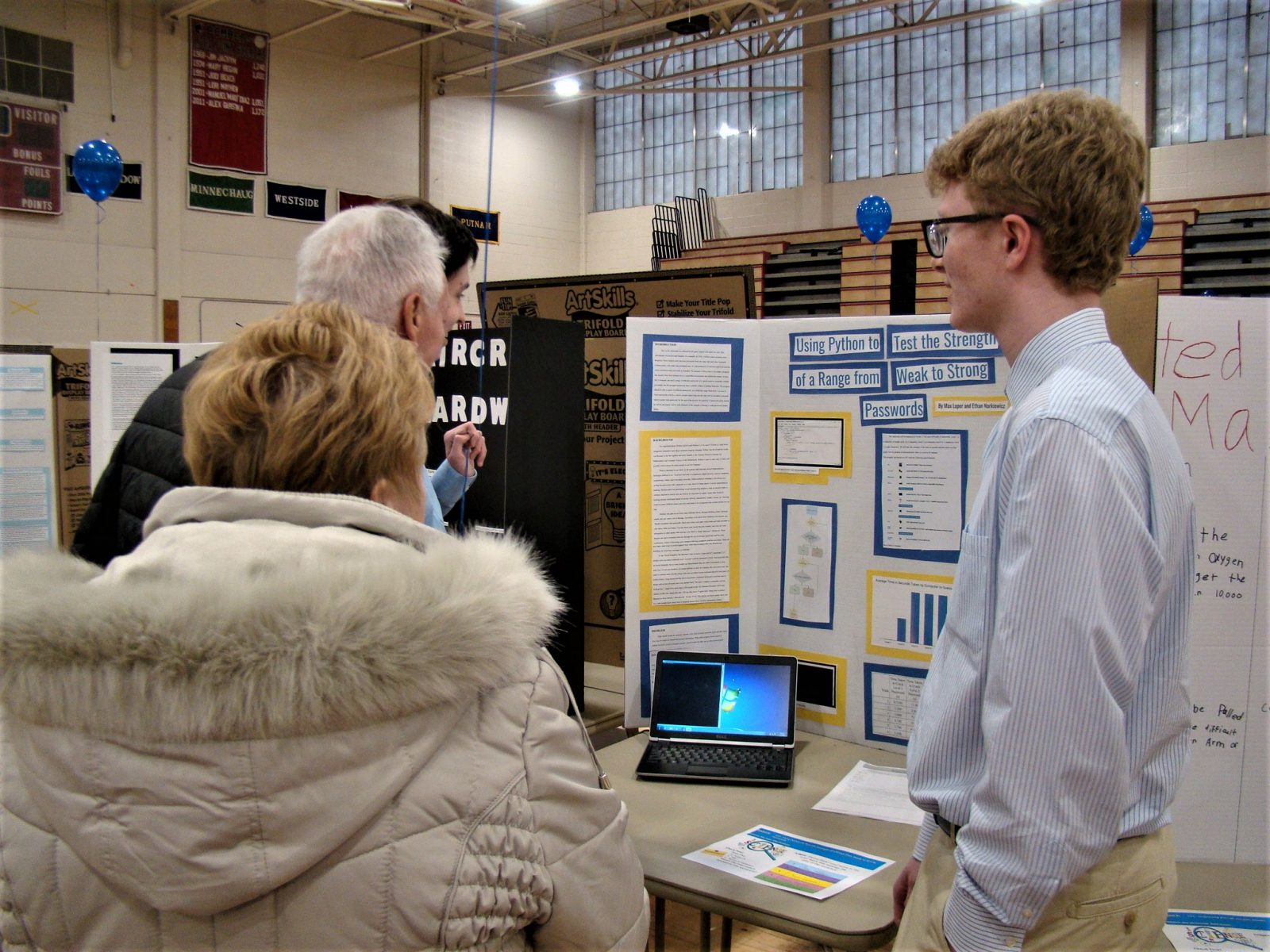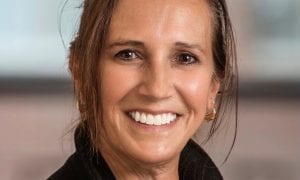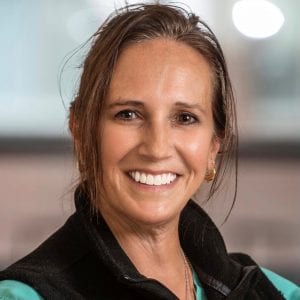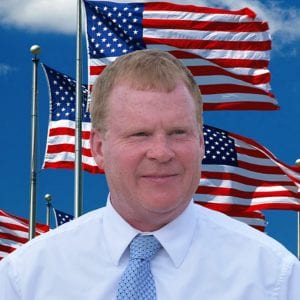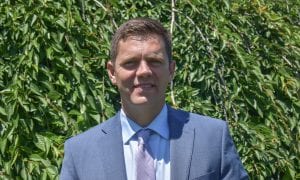WESTFIELD – The projects presented at the Feb. 12 Westfield High School Science and Engineering Fair explored topics from biodegradable filaments to the effects of vaping.
Science, Technology and Engineering Supervisor Lauren Figy said that 243 students participated with 168 exhibits, including 36 students from Westfield Technical Academy.
Final judging concluded on Feb. 13 for the top 17 projects, including two from Westfield Tech, that will go on to compete at the Regionals at Smith College in the spring. Figy said they are limited in the number of projects they can send this year due to the new location.
“Students that participated in the 20th Annual Science Fair did an amazing job! I was extremely impressed with the quality of projects we had this year! We are excited to see how students do at Regionals March 7th at Smith College,” Figy said about this year’s participants.
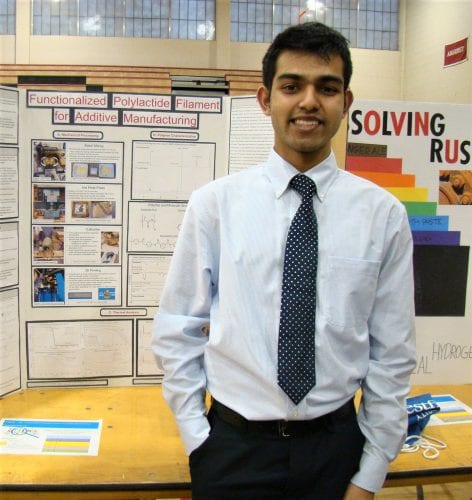
WHS Junior Suvin Sundararajan took first place with his project, Functionalized Polylactide Filament for Additive Manufacturing. (AMY PORTER/THE WESTFIELD NEWS)
First place at the Westfield Science Fair went to Westfield High Junior Suvin Sundararajan. Sundararajan said this year’s project was originally going to be a continuation of last year’s project development of biodegradable plastic sheets, which took him to the International competition in Phoenix, where he won several awards. However, this year he decided to focus on creating biodegradable filaments specifically for use in 3D printers.
“It retains all the biodegradable properties, and this year adds flame retardants,” Sundararajan said. He said the filament, which he tested for thermal properties and tensile strength, has high potential in the aerospace industry. He declined to talk too specifically about the manufacturing process, for which he is seeking a patent.
“I think I want to be a researcher or a medical scientist,” Sundararajan said.
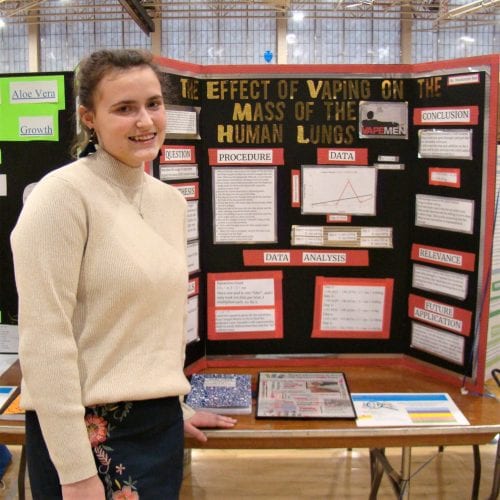
Second place finisher Mackenzie Rae studied The Effect of Vaping on the Exhalation Output of the Human Lungs. (AMY PORTER/THE WESTFIELD NEWS)
Second place went to Westfield High Junior Mackenzie Rae. Rae studied the effect of vaping on the mass of human lungs. Rae said her project was unconventional, in that she used the suction of a sink faucet to create a suction great enough to extract Juul vapor into a flask with cotton balls.
“What I found is if someone were to juul one pot a day in 2020, they would be adding 15% mass to their lungs,” Rae said. She said she wanted to do the project, because as an athlete who plays two varsity sports, she is already starting to see the performance of friends who vape decreasing, even when they haven’t been doing it for an entire year.
Rae said she competed at states last year with her project which showed the effect of app functions on cellular electro-magnetic fields.
Third place winner was Charles Przeckrocki with his project Can Bubble Gum and Other Such Home-Made Threadlockers Binding Agent Be Used in a Pinch.
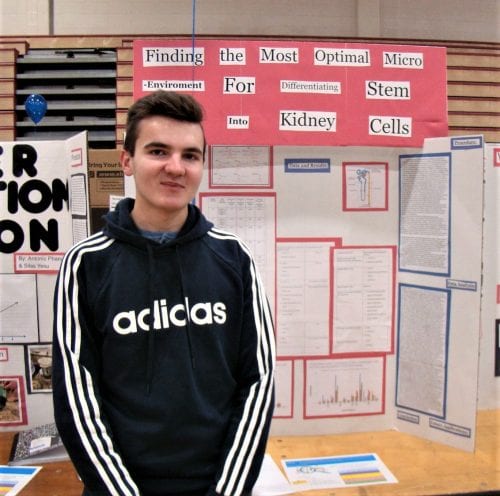
WHS Senior Stefan Goretskiy, Using Bioinformatics to Find the Most Suitable Microenvironment for Differentiating Stem Cells Into Kidney Cells. (AMY PORTER/THE WESTFIELD NEWS)
Other students who made the top 17 included Westfield High Senior Stefan Goretsky. His project was finding the optimal micro-environment for differentiating stem cells into kidney cells. Goretsky, who is taking AP chemistry and physics, said this project involves bioengineering and regenerative medicine to try to create nephron, the functional unit of the kidney, from stem cells. He used bio informatics databases for the project, and came up with potential combinations for growth soluble factors and potential proteins for the micro-environment.
“It’s a lot of work, but in the end, it’s rewarding. All you’ve exerted pays off. It’s a very competitive year,” Goretsky said. This is his fourth year entering the science fair.
“I like science,” Goretsky added, saying that while his future plans aren’t yet set, he will probably pursue something in the field of regenerative medicine or biochemistry. Or, as a violin and piano player, he may study music.
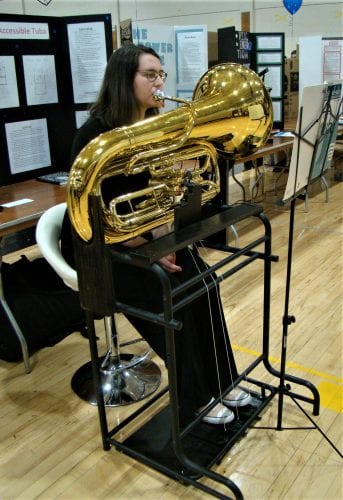
WHS freshman Samantha Adamtsev made an Accessible Tuba by creating a hands-free stand. (AMY PORTER/THE WESTFIELD NEWS)
Another musician, Westfield High Freshman Samantha Adamtsev’s project, The Accessible Tuba, was a personal one. Her goal was to allow people who have physical disabilities and can’t use their arms to play the tuba. Using materials she found in her basement, Adamtsev fashioned a platform and built pedals which pushed plungers into the valves of the tuba, allowing her to play.
Adamtsev, who plays the tuba, was inspired by watching a program about a professional violin player who lost the use of her arms. “I decided to make myself a version of my own instrument that I could play if something like that were to happen to me,” she said.
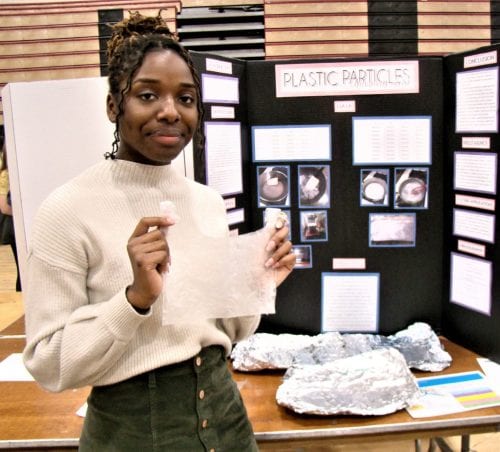
WHS sophomore Antoinette Reid created a biodegradable plastic bag with her project Plastic Particles. (AMY PORTER/THE WESTFIELD NEWS)
Westfield High Sophomore Antoinette Reid also did a project on biodegradable plastic particles. She worked with starches in place of petroleum, experimenting with both potato starch, which she eliminated, and corn starch. She also added water, vinegar and glycerin. After finding the right formula, she created a sample plastic bag.
Reid said her main interest is in computer sciences.
The only computer science project in the top 30 was by juniors Ethan Narkiewicz and Max Loper, who used Python, a programming language for video games, to test the strength of passwords.
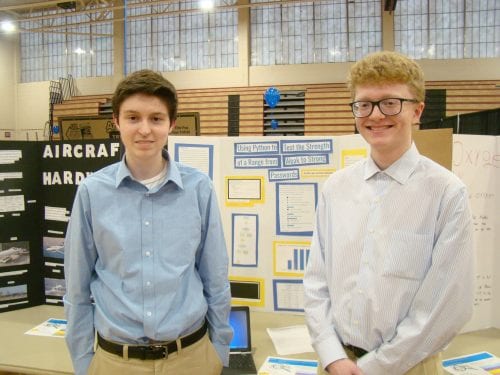
WHS juniors Ethan Narkiewicz and Max Loper tested the strength of passwords with Python. (AMY PORTER/THE WESTFIELD NEWS)
Narkiewicz and Loper found that an eight-character password with upper and lower case letters, numbers and special characters took the longest time, up to their 20 minute cap, for the program to find. Four character passwords, especially names and common words, could be hacked in as little as 5 seconds. They recommended using random letter combinations, plus numbers and special characters for a stronger password.
“It shows you how long a hacker has to wait to get a password,” Loper said about the program they created. This is Loper’s third year and Narkiewicz’s first to enter the science fair, and first in the top 30 finalists. “All the hard work paid off,” Loper said.
Both Narkiewicz and Loper plan to take AP Computer Science next year.
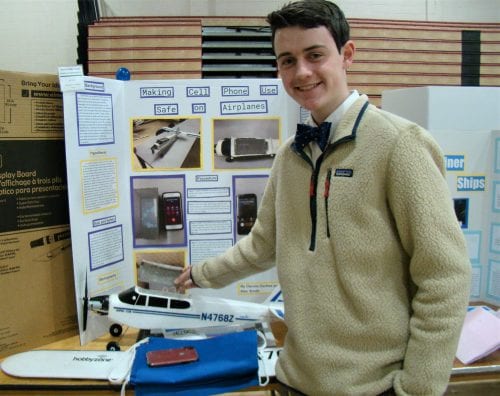
WTA Aviation sophomores Alec Smith (pictured) and Dacota Durkee explored Making Cell Phones Safe on Airplanes. (AMY PORTER/THE WESTFIELD NEWS)
One of the two Westfield Technical Academy projects to make it into the top 17, and to move on to the Regionals, was from AviationTechnology sophomores Alec Smith and Dacota Durkee. Smith and Durkee worked on making cell phone use safe on airplanes.
Smith said cell phones release electric magno interference (EMI), which can interfere with the pilot’s readings. They developed a model for a “Faraday” cage, which would surround the cabin of an aircraft, so no one can send or receive EMI.
Smith, who would like to become a pilot, said the cage gives the pilot control on whether or not passengers can use the phones to text. He said Wi-fi can be hardwired into the shield, which would be under the pilot’s control.
“I continue to be very impressed with the effort and quality of student projects. I want to thank the students, staff and community judges that help make this one of the most recognized Science Fairs in the state,” said Superintendent Stefan Czaporowski following the event.

